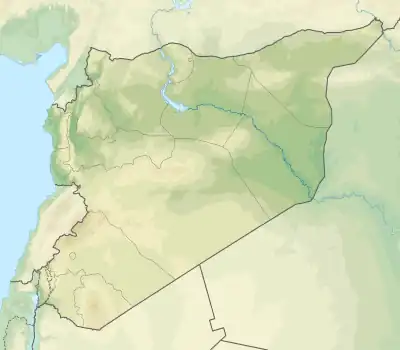 | |
| Local date | 12 August 1157 |
|---|---|
| Magnitude | 7.4 Ms[1] |
| Epicenter | 35°06′N 36°30′E / 35.1°N 36.5°E[2] |
| Areas affected | Syria (region) |
| Total damage | Extreme[3] |
| Max. intensity | VIII (Severe) – IX (Violent) |
| Casualties | 8,000[3] |
After a year of foreshocks, an earthquake occurred on 12 August 1157 near the city of Hama, in west-central Syria (then under the Seljuk rule), where the most casualties were sustained.[2] In eastern Syria, near the Euphrates, the quake destroyed the predecessor of the citadel al-Rahba, subsequently rebuilt on the same strategic site. The earthquake also affected Christian monasteries and churches in the vicinity of Jerusalem.
See also
References
- ↑ Sbeinati, M.R.; Darawcheh R.; Mouty M (2005). "The historical earthquakes of Syria: an analysis of large and moderate earthquakes from 1365 B.C. to 1900 A.D." Annals of Geophysics. 48 (3): 347–435. doi:10.4401/ag-3206.
- 1 2 Ambraseys, Nicholas N. (2004). "The 12th century seismic paroxysm in the Middle East: a historical perspective" (PDF). Annals of Geophysics. Istituto Nazionale Geofisica e Vulcanologia. 47 (2–3): 733, 738, 745, 750.
- 1 2 National Geophysical Data Center / World Data Service (NGDC/WDS) (1972), Significant Earthquake Information, National Geophysical Data Center, NOAA, doi:10.7289/V5TD9V7K
This article is issued from Wikipedia. The text is licensed under Creative Commons - Attribution - Sharealike. Additional terms may apply for the media files.